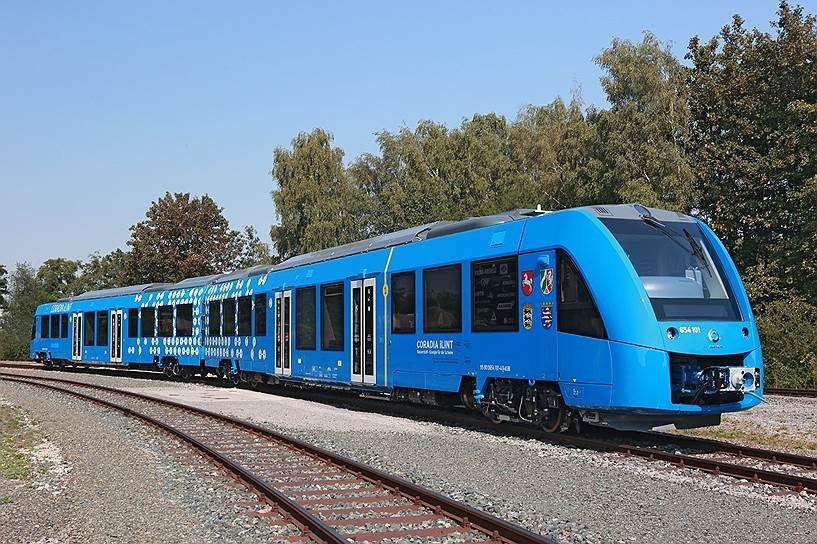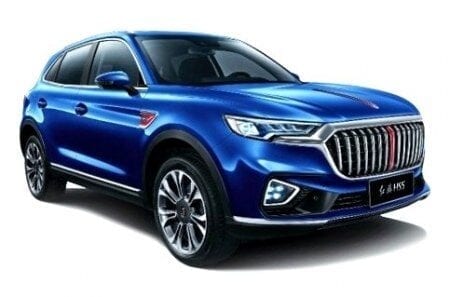
Take... the hydrogen train
The idea of building a train on hydrogen is not as new as some might think. However, in recent years, this idea seems to have been actively developed. We may be wondering that we may soon see Polish hydrogen locomotives as well. But maybe it's better not to litter.
At the end of 2019, information appeared that Bydgoska PESA by mid-2020, he wants to prepare a plan for the development stages of propulsion technology based on hydrogen fuel cells in railway vehicles. In a year, they should begin to be implemented in cooperation with PKN ORLEN first operational tests of vehicles. Ultimately, the developed solutions are supposed to be used both in freight locomotives and in rail vehicles intended for passenger transportation.
The Polish fuel concern announced the construction of a hydrogen purification plant at the ORLEN Południe plant in Trzebin. The production of clean hydrogen fuel, which will be used to power vehicles, including the planned PESA locomotives, should begin in 2021.
Poland, incl. thanks to PKN ORLEN, it is one of the largest hydrogen producers in the world. According to the company's management, in the production process, it already produces about 45 tons per hour. It sells this raw material for passenger cars at two stations in Germany. Soon, car drivers in the Czech Republic will also be able to refuel with hydrogen, as UNIPETROL from the ORLEN group will start building three hydrogen stations there next year.
Other Polish fuel companies are also involved in interesting hydrogen projects. LOTUS starts working with Toyotaon the basis of which it is planned to build refueling stations with this ecological fuel. Our gas giant also led the initial negotiations with Toyota, PGNiGwho wants to become one of the leaders in the development of hydrogen technologies in Poland.
Areas of study include manufacturing, warehousing, vehicle propulsion and network distribution to customers. Toyota is likely thinking about the capacities of its Mirai hydrogen models, the next version of which should hit the market in 2020.
In October, the Polish company PKP Energy In collaboration with Deutsche Bahn, a fuel cell has been introduced to provide an alternative to the diesel engine as an emergency power source. The company also wants to take part in the development of hydrogen technologies. One of the ideas that the media is talking about is the transition to hydrogen. Reda-Hel railway line, instead of its planned electrification.
The solution presented at the TRAKO railway exhibition is the so-called. The kit consists of a photovoltaic panel that interacts with a methanol fuel cell, which provides electricity independent of the traditional power grid. When the production of solar energy becomes insufficient, the fuel cell automatically starts. Importantly, the cell can also run on hydrogen fuel.
Hydrail or hydrogen railway
Potential applications for hydrogen railways include all types of rail transport - commuter, passenger, freight, light rail, express, mine railways, industrial rail systems, and special level crossings in parks and museums.
appointment "Hydrogen Railway" () was first used on August 22, 2003 during a presentation at the Volpe Transportation Systems Center of the US Department of Transportation in Cambridge. Stan Thompson of AT&T then gave a presentation on the Mooresville Hydrail Initiative. Since 2005, the International Conference on Hydraulic Actuators has been held annually by Appalachian State University and the South Iredell Chamber of Commerce in Mooresville in collaboration with universities and other organizations.
They are designed to bring together scientists, engineers, plant managers, industry experts and operators who work with or use this technology around the world to share knowledge and discussions leading to accelerated adoption of hydrogen solutions - in terms of environmental protection, climate protection, energy security . and overall economic development.
Initially, hydrogen fuel cell technology was best known and widely used in Japan and California. Recently, however, the most talked about investments related to this are in Germany.
Alstom–Coradia iLint trains (1) - equipped with fuel cells that convert hydrogen and oxygen into electricity, thus eliminating the harmful emissions associated with burning fuel, hit the rails in Lower Saxony, Germany, as early as September 2018. 100 km - ran through Cuxhaven, Bremerhaven, Bremerwerde and Buxtehude, replacing the existing fleet of diesel trains there.
German trains are refueled by a mobile hydrogen filling station. Hydrogen gas will be pumped into the trains from a steel container over 12 meters high located next to the tracks at Bremerwerde station.
At one gas station, trains can run on the network all day long, covering 1 km. According to the schedule, a fixed filling station in the area served by the EVB railway company will be launched in 2021, when Alstom will deliver 14 more Coradia iLint trains in LNG operator.
Last May, it was reported that Alstom would produce 27 more hydrogen trains for RMV operatorwhich will move to the Rhine-Main region. Hydrogen for the RMV depot is a long-term infrastructure project that will start in 2022.
The contract for the supply and maintenance of cell trains is 500 million euros for a period of 25 years. The company will be responsible for the supply of hydrogen Infraserv GmbH & Co Hoechst KG. It is at Höchst near Frankfurt am Main that the hydrogen refueling plant will be installed. Support will be provided by the federal government of Germany - it will finance the construction of the station and the purchase of hydrogen by 40%.
2. Hybrid hydrogen locomotive tested in Los Angeles
In the UK Alstom with a local carrier Eversholt Rail plans to convert Class 321 trains to hydrogen trains with a range of up to 1 km. km, moving at a maximum speed of 140 km / h. The first batch of modernized machines of this type should be manufactured and ready for operation in early 2021. The British manufacturer also unveiled its fuel cell train project last year. Vivarail.
In France, the state-owned railway company SNCF has set itself the goal of phasing out diesel trains by 2035. As part of this work, SNCF plans to start testing hydrogen fuel cell rail vehicles in 2021 and expects them to be fully operational by 2022.
Research on hydrogen trains has been going on for many years in the US and Canada. For example, the use of this type of locomotive for transportation in shipyards was considered. In 2009-2010 he tested them local carrier BNSF in Los Angeles (2). The company recently received a contract to build the first hydrogen-fueled passenger train in the United States (3). Stadler.
The agreement provides for the possibility of creating four more machines. Powered by hydrogen Flirt H2 scheduled to launch in 2024 as part of a passenger rail project redlands, a 14,5 km line between Redlands and Metrolink in San Bernardino, California.
3. Material advertising the first hydrogen passenger train in the US.
Under the agreement, Stadler will develop a hydrogen train that will consist of two cars on either side of the power unit containing fuel cells and hydrogen tanks. This train is expected to carry a maximum of 108 passengers, with additional standing space and a top speed of up to 130 km/h.
In South Korea Hyundai Motor Group is currently developing a fuel cell train with the first prototype expected to be released in 2020.
The plans assume that he will be able to travel 200 km between refueling, at speeds up to 70 km / h. In turn, in Japan East Japan Railway Company. announced a plan to test new hydrogen trains from 2021. The system will provide a maximum speed of 100 km/h. and is expected to travel about 140 km on a single hydrogen tank.
If the hydrogen railroad becomes popular, it will require fuel and all the infrastructure to support rail transport. It's not just the railroads.
The first one was launched in Japan recently. liquefied hydrogen carrierSuiso Frontier. It has 8 thousand tons of capacity. It is designed for long-distance sea transportation of large quantities of hydrogen, cooled to -253°C, with a reduced volume in the ratio of 1/800 compared to the original gas volume.
The ship should be ready by the end of 2020. These are the ships that ORLEN can use to export the hydrogen they produce. Is it the distant future?
4. Suiso Frontier on the water
See also:

